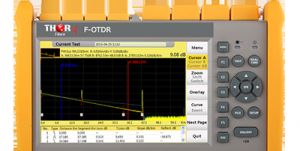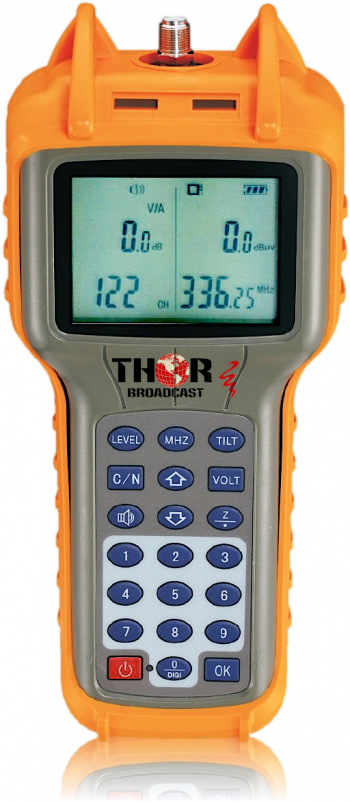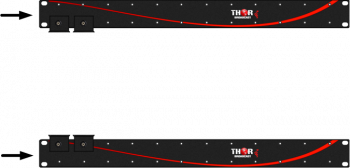An Optical Time Domain Reflectometer sends out a flash of bright light, and measures the intensity of echo or reflections. This weak signal is averaged to reduce detection noise, and computation is used to display faults, measure losses such as caused by bends, splicing or connectors.
This instrument is for measuring points loss on installed systems, where it is used to find faults and measure point losses such as caused by splicing. However to do this accurately is more complicated and time consuming than is commonly supposed, since a measurement should be taken from both ends of the system, and then averaged. If this is not done, spurious excess losses and \"gainers\" may be recorded where different fibers are joined, resulting in wasted splicing effort while non-existent faults are \"repaired\". This is a particular issue when measuring the fusion splice joints, where the loss is small, and the adjacent sections may have fibers with different intrinsic backscatter characteristics.
Ideally OTDRs are used for return loss measurements.
APPLICATIONS
- FTTX test with PON networks
- CATV network testing
- Access network testing
- LAN network testing
- Metro network testing
- Lab and Factory testing
- Live fiber troubleshooting
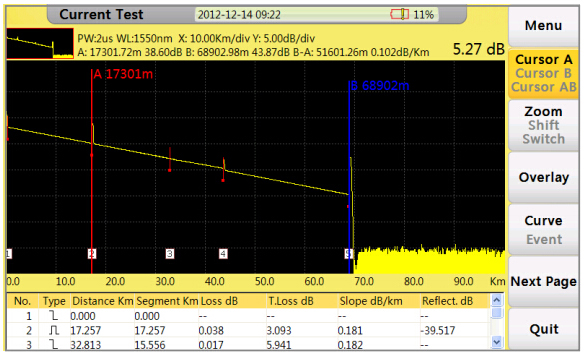
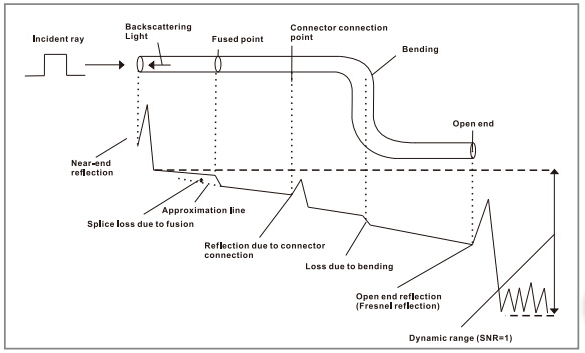
Test Interface
F-OTDR series OTDR could display Splice loss, Connector loss, Fiber attenuation, Reflection of points, Link opitcal return loss and distance to fiber events etc. With test information in a smart way, you could get detailed information immediately.
Quick fit in short time
Simplified display style and structured menus help reduce the time of study.
FTTH test within PON networks
F-OTDR series model T43F, are dedicated to testing of PON network maintenance and troubleshooting without service disruption.
Last mile master
F-OTDR series OTDR could easily test through 1x32 PLC splitter in PON test (Model: F-OTDR-T43F).

 ES
ES




